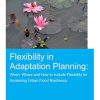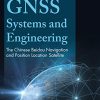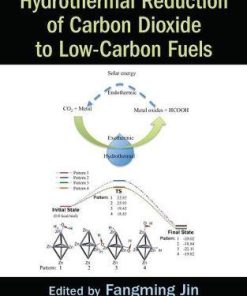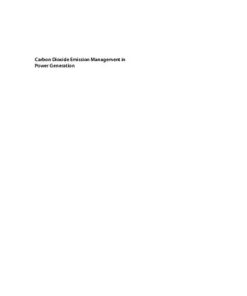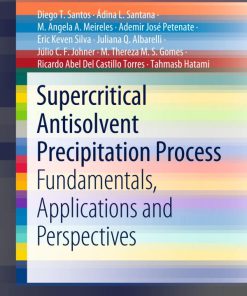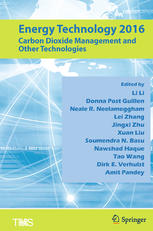Fundamentals and Applications of Supercritical Carbon Dioxide SCO2 Based Power Cycles 1st Edition by Klaus Brun, Peter Friedman, Richard Dennis ISBN 9780081008058 0081008058
$50.00 Original price was: $50.00.$25.00Current price is: $25.00.
Fundamentals and Applications of Supercritical Carbon Dioxide SCO2 Based Power Cycles 1st Edition by Klaus Brun, Peter Friedman, Richard Dennis – Ebook PDF Instant Download/Delivery: 9780081008058 ,0081008058
Full download Fundamentals and Applications of Supercritical Carbon Dioxide SCO2 Based Power Cycles 1st Edition after payment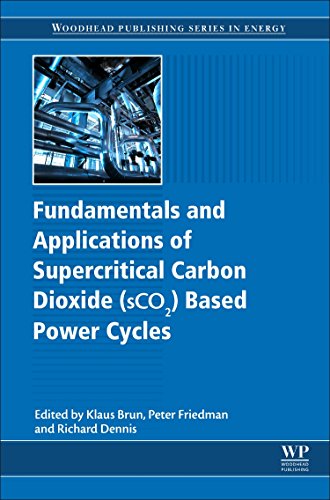
Product details:
ISBN 10: 0081008058
ISBN 13: 9780081008058
Author: Klaus Brun, Peter Friedman, Richard Dennis
Fundamentals and Applications of Supercritical Carbon Dioxide (SCO2) Based Power Cycles aims to provide engineers and researchers with an authoritative overview of research and technology in this area. Part One introduces the technology and reviews the properties of SCO2 relevant to power cycles.
Other sections of the book address components for SCO2 power cycles, such as turbomachinery expanders, compressors, recuperators, and design challenges, such as the need for high-temperature materials. Chapters on key applications, including waste heat, nuclear power, fossil energy, geothermal and concentrated solar power are also included. The final section addresses major international research programs.
Readers will learn about the attractive features of SC02 power cycles, which include a lower capital cost potential than the traditional cycle, and the compounding performance benefits from a more efficient thermodynamic cycle on balance of plant requirements, fuel use, and emissions.
- Represents the first book to focus exclusively on SC02 power cycles
- Contains detailed coverage of cycle fundamentals, key components, and design challenges
- Addresses the wide range of applications of SC02 power cycles, from more efficient electricity generation, to ship propulsion
Fundamentals and Applications of Supercritical Carbon Dioxide SCO2 Based Power Cycles 1st Edition Table of contents:
1. Introduction and background
Overview
Key Terms
1.1. Introduction
1.2. Overview of supercritical CO2 power cycle fundamentals
1.3. Applications for sCO2 power cycles
1.4. Summary and conclusions
2. Physical properties
Overview
Key Terms
2.1. Introduction
2.2. Qualities of supercritical CO2
2.3. Equations of state for calculating supercritical CO2 properties
2.4. Overview of thermodynamic property trends
2.5. Impurities of CO2 mixtures
2.6. Summary
3. Thermodynamics
Overview
Key Terms
3.1. Introduction
3.2. Governing relationships
3.3. Analysis
3.4. Example applications
3.5. Conclusions
4. High-temperature materials
Overview
Key Terms
4.1. Introduction
4.2. Thermodynamics of oxidation
4.3. Investigations of high-temperature corrosion in ambient and subcritical CO2
4.4. Laboratory investigations of supercritical CO2 corrosion rates and reaction products
4.5. Effect of CO2 on mechanical properties
4.6. Current status and ongoing supercritical CO2 work
4.7. Future directions
4.8. Conclusions
5. Modeling and cycle optimization
Overview
Key Terms
5.1. Introduction to cycle modeling
5.2. Basics of cycle modeling
5.3. Design point analysis
5.4. Considerations for off-design modeling
5.5. Advanced considerations for steady-state modeling
5.6. Cycle optimization
5.7. Transient code requirements
5.8. Conclusion
6. Economics
Overview
Key Terms
6.1. Introduction (advantages and disadvantages in potential markets)
6.2. Potential markets
6.3. Introduction to the economics of supercritical CO2 power plants
6.4. Project cost basis
6.5. Summary and conclusions of supercritical CO2 power system economics
7. Turbomachinery
Overview
Key Terms
7.1. Introduction
7.2. Machinery configurations
7.3. Existing supercritical CO2 turbomachinery designs
7.4. Common design attributes and components
7.5. Compressor and pump design considerations for supercritical CO2
7.6. Turbine design considerations for supercritical CO2
7.7. Summary
8. Heat exchangers
Overview
Key Terms
8.1. Introduction
8.2. Applications in supercritical CO2 power cycles
8.3. Candidate architectures
8.4. Operating conditions and requirements
8.5. Design considerations
8.6. Design validation
8.7. Conclusion
9. Auxiliary equipment
Overview
Key Terms
9.1. CO2 supply and inventory control systems
9.2. Filtration
9.3. Dry gas seal supply and vent system
9.4. Instrumentation
9.5. Summary
10. Waste heat recovery
Overview
Key Terms
10.1. Introduction
10.2. Waste heat recovery overview
10.3. Waste heat recovery applications
10.4. Waste heat exchanger design
10.5. Economics and competitive assessment
10.6. Technology development needs
11. Concentrating solar power
Overview
Key Terms
11.1. Motivation for integrating supercritical CO2 into CSP systems
11.2. Introduction to concentrating solar power technologies
11.3. Considerations for integrating supercritical CO2 with concentrating solar power
11.4. Potential system designs and current research
11.5. Concluding comments—role of supercritical CO2 in the future of concentrating solar power
12. Fossil energy
Overview
Key Terms
12.1. Introduction
12.2. Indirect supercritical CO2 cycles
12.3. Direct supercritical CO2 cycles
12.4. Conclusions
13. Nuclear power
Overview
Key Terms
13.1. Benefits of supercritical CO2 cycles for nuclear power
13.2. Drawbacks of supercritical CO2 cycles
13.3. History of supercritical CO2 cycle development
13.4. Applications to specific reactor types
13.5. Example of a supercritical CO2 power cycle converter for a sodium-cooled fast reactor
13.6. Transient analysis of supercritical CO2 cycles
13.7. Control strategy development
13.8. Examples of specific nuclear power plant transients for a sodium-cooled fast reactor
13.9. Summary and closure
14. Test facilities
Overview
Key Terms
14.1. Introduction
14.2. Sandia National Laboratories recompression loop
14.3. Naval Nuclear Laboratory Integrated System Test
14.4. Echogen EPS100
14.5. SwRI SunShot test loop
14.6. Other test facilities
14.7. Future trends/conclusions
15. Research and development: Essentials, efforts, and future trends
Overview
Key Terms
15.1. Introduction: objectives of research and development
15.2. Overall power cycle design
15.3. Working fluid quality
15.4. Compressors
15.5. Turbines
15.6. Heat Exchangers
15.7. Balance of plant design
15.8. Materials
15.9. Conclusion
Index
People also search for Fundamentals and Applications of Supercritical Carbon Dioxide SCO2 Based Power Cycles 1st Edition:
fundamentals of critical care support course
fundamentals of critical care support pdf
fundamentals of application software
supercritical and subcritical flow
Tags:
Klaus Brun,Peter Friedman,Richard Dennis,Fundamentals,Applications,Supercritical Carbon Dioxide
You may also like…
Chemistry
Carbon Dioxide and Organometallics 1st Edition by Xiao Bing Lu ISBN 9783319220772 3319220772
Uncategorized
Physics and Chemistry of Carbon-Based Materials: Basics and Applications Yoshihiro Kubozono
Engineering
Carbon Dioxide Emission Management in Power Generation 1st Edition Lars O. Nord Olav Bolland
Science (General)
Engineering
Energy Technology 2018 : Carbon Dioxide Management and Other Technologies 1st Edition Ziqi Sun
Computers - Hardware Technique - Electronics: Hardware
Engineering
Energy Technology 2016 Carbon Dioxide Management and Other Technologies 1st Edition Li Li


